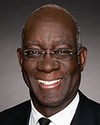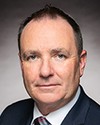I believe there's truth in that. I think that the culture of invisibility is changing.
I like to look at women's engagement and people with differences' engagement in the Canadian Armed Forces through the lens of three phases.
The first is the period when women and people of difference are demonstrating that they're not harmful to the institution. I lived through that phase in the nineties and early 2000s. People didn't know if women would be successful in the infantry and whether or not our presence would undermine cohesion.
Certainly I know that the people in this room who've testified know that feeling too. That phase demands silence from the member, because you're demonstrating that you're not harmful to the institution, so you do not bring voice to the things that make you different.
The next phase I call the phase of demonstrating that we are force multipliers. We are contributors to the organization and we bring value. It's in this phase that you see people as commanders and succeeding on operations, and you see successful integration. During this phase, from the outside looking in, things are looking much better, but this phase also demands silence from the people who are living it, because they're still proving that they are contributors to the organization.
My hope is that we are now into a third phase, where it is safe to bring voice to the things that make us different. In this phase, there is an empowered use of voice. In this phase, the institutions—both VAC and the CAF—shift, because they begin to hear with more clarity from more people of the differences and the unique needs that they have. In this phase, the institutions need to shift, and the individuals bring voice to it.
I think we are getting there, but I also think there are still instances of people becoming accustomed to silence, and that silence causes this culture of invisibility.





